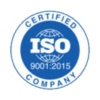MiConnect Technology Simplifies Manufacturing Automation – Software Introduction
In this video, Rob Caron introduces Caron Engineering’s latest smart manufacturing solution, MiConnect Technology!
MiConnect Technology is a new flexible application builder designed specifically for the CNC manufacturing environment. Rob Caron demonstrates it being used for all inter-device communication in a fully-automated production cell.
MiConnect Technology has an inventory of pre-built drives and operations making it easy for our integration specialists to design unique applications for our customers. Plus, the flexible design infrastructure allows for changes and updates to the process at any time.
Full Video Transcript
I’m going to talk a little bit about our MiConnect software. A piece of software that allows easy integration between many different devices for machine tending, automation and just communications to supervisory systems. So what MiConnect can do for you is it allows you to connect to things like robots, gauging systems, CNC controls, ERP systems, and MES systems automatically with pre-written drivers that MiConnect already has built into it. With MiConnect involved everything becomes an ethernet connection to all the different devices. All the physical I/O bits are virtual registers inside. All the registers in the UR robot are also immediately available, as well as the measuring system like a ZCAT. So let’s look at how MiConnect actually communicates all these different devices. Well we have pre-programmed the communications to many different devices in MiConnect, things like CNC Communications, file Communications, Modbus TCP. This is a plug-in for the ZCAT CMM and here are all the signals that particular device has internally and we’ve defined them in MiConnect, and they just become a data item that can be used inside of your flowchart program. Also with something like a UR robot we also have predefined registers that allow you to communicate to and from the robot. The robot can tell MiConnect that the part’s loaded, we can also tell the robot when the measure machine has completed the measuring cycle. So these are all parts of the registers that the user can define based on the type of device that’s there. Very simple, very straightforward, and also very editable at any point in time. Okay, so now let’s look at how the actual flow chart, really the meat of the product, is actually created here. First steps are the programmer developing the MiConnect project simply creates a series of steps. These are sequential things that are going to run. In this kind of quick example we’re going to show one of the steps here where we’re looking at the CMM measuring the part and while we’re waiting for the CMM to do its measuring we’re simply waiting for two things – is the part finished or is there an error. And you can see that those are signals that we looked at in the ZCAT plug-in earlier that simply get checked in this conditional block that we create. Once something happens it’s going to either go to the next step if everything was okay or go and process an error in a different loop. Let’s assume that ZCAT finished the part correctly, it’s going to go and interrogate the completion results of the system. A part can either be good, bad, or have a warning. The typical state is good or bad. Once the ZCAT results are sent out to MiConnect, MiConnect then reads those results and sends those results to the robot so a conditional statement is reading something, and a data transfer is writing a state. So what we’re looking at right here on this screen and the other screens I’ve been showing is the actual MiConnect editor. This is a tool for the person that’s creating MiConnect projects. Once a project has been created that person simply saves that project and installs the runtime version on any device that’s going to run this project. They can test it right here when they’re developing a project by simply hitting the Run button in the editor. It runs the project and communicates to all the devices and then simply runs through the standard pieces as you can see any buttons that were coming up for an operator, any screens that are going to show, and any steps that are involved are automatically put up on the screen for the user to see. The user never sees the editor part, they only see this user interface. So really this is just a small example of what can be connected together with our MiConnect software. We have a robot, a CNC machine and a gauge. Now that data often needs to go somewhere to be able to tell a supervisory system what to do. Well, MiConnect also has connectivity to communicate to SQL servers through MES systems or ERP systems. The other background hidden benefit is the audit log in MiConnect. It tracks the date and time of every event that happens whether it be a grab of a part, input or output of data, reading of a barcode. All that is automatically saved and audited in a log in MiConnect it can be viewed later on. [Music]

